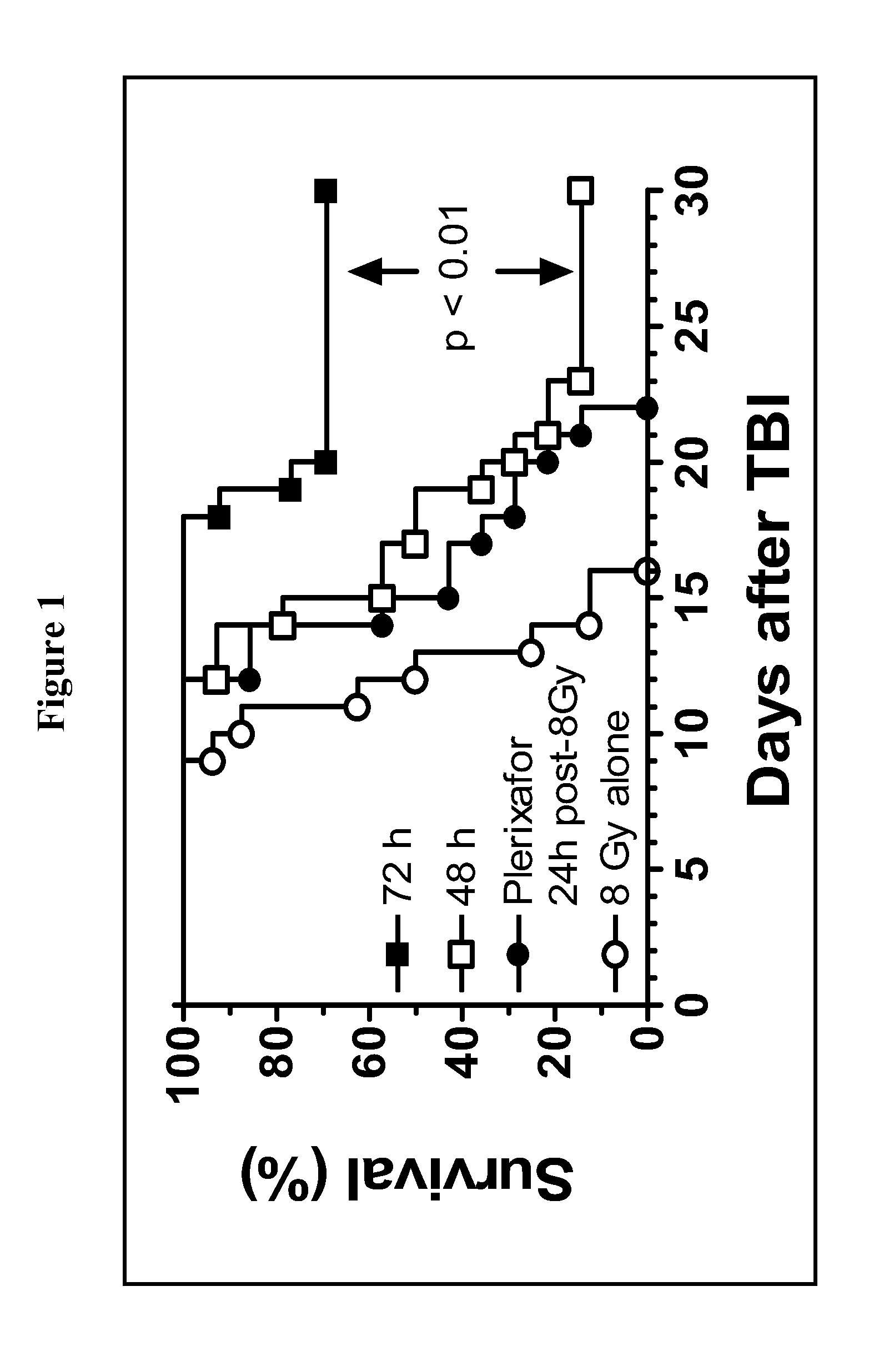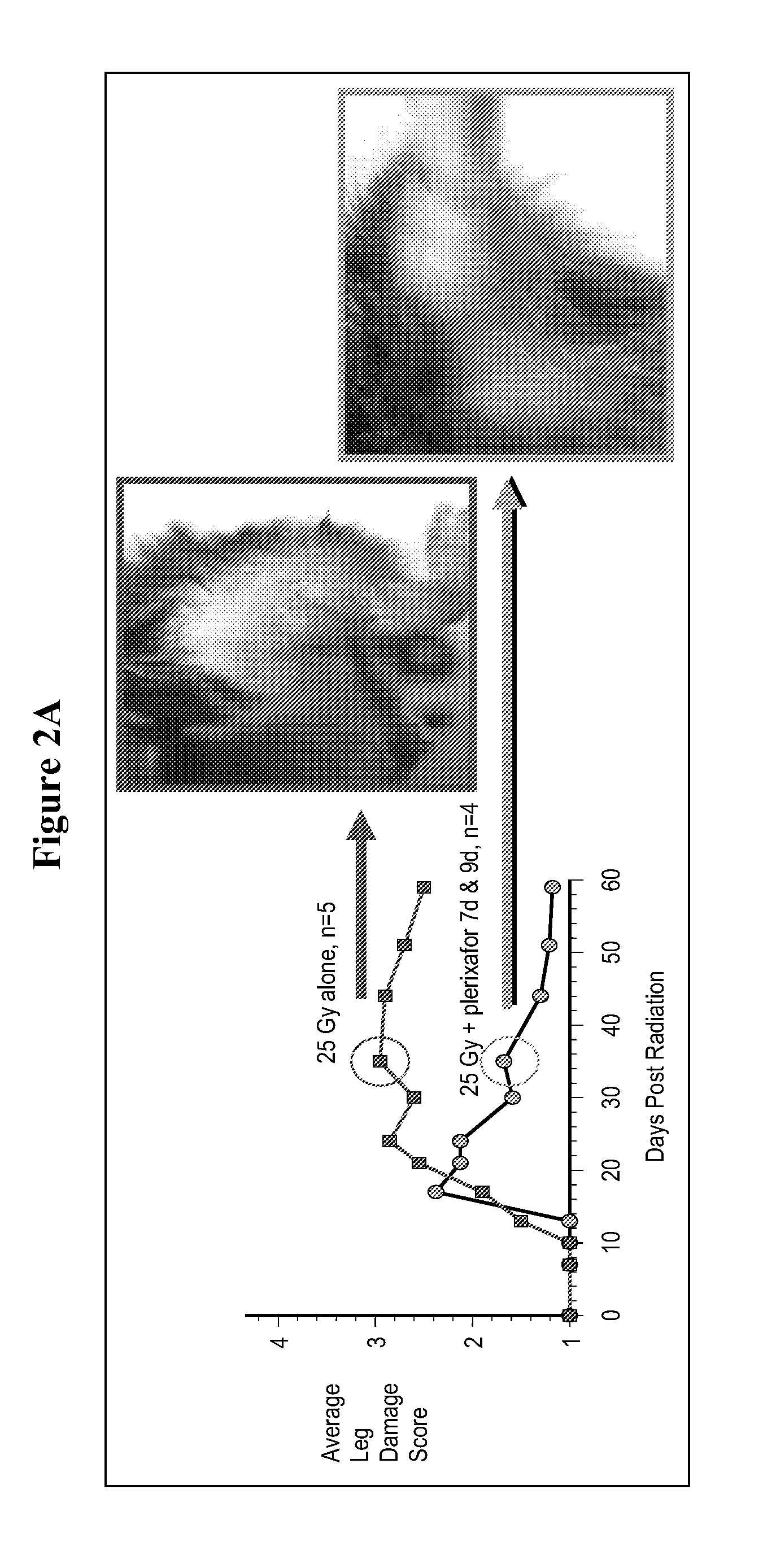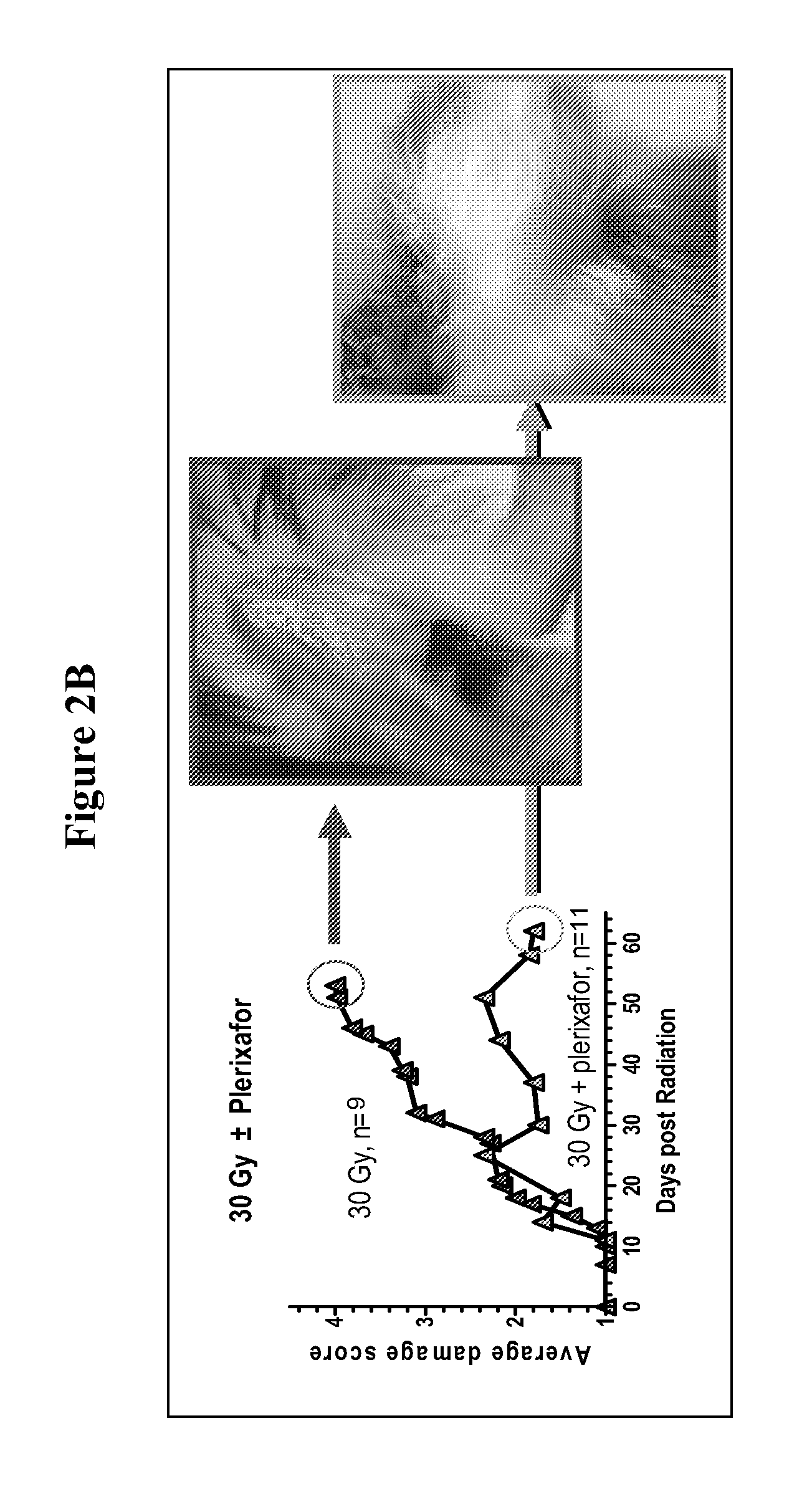Method to mitigate injury from radiation exposure
a radiation exposure and injury technology, applied in the field of radiation exposure injury mitigation, can solve the problems of withdrawn from clinical development, ineffective in 15 to 20% of patients, etc., and achieve the effect of reducing skin injury
- Summary
- Abstract
- Description
- Claims
- Application Information
AI Technical Summary
Benefits of technology
Problems solved by technology
Method used
Image
Examples
example 1
[0020]We exposed mice to radiation, total body dose of 8 Gy at a rate of approximately 1 Gy per minute. Subsequently, days later, we administered Mozobil [I.P.] at 5 mg / kg dose as a single injection. We monitored the test mice for lethality. We found survival was significantly enhanced with Mozobil.
example 2a
CXCR4 Antagonist Reduces Lethality Following Radiation Exposure
[0021]The CXCR4 antagonist plerixafor, given after total body irradiation (TBI) to C57BL / 6 mice provides significant mitigation from TBI-induced lethality. FIG. 1 illustrates the significant enhancement in survival to an otherwise lethal radiation exposure when plerixafor was administered 3 days after the radiation.
[0022]Referring to FIG. 1, mitigation of radiation lethality by plerixafor, 5 mg / kg, I.P. increased with the duration of time delay between radiation exposure and drug administration. Survival at 30 days increased from 0% to 14% to 69% when plerixafor was administered 24 h, 48 h, and 72 h after radiation exposure, respectively. Median survival was significantly improved from 18 to beyond 30 days, when the time between radiation and drug increased from 48 to 72 h (p<0.01, Logrank).
[0023]We note that the enhanced survival after radiation of animals given plerixafor was consistent with the observation that mice e...
example 2b
CXCR4 Antagonist Reduces Lethality Following Radiation Exposure
[0024]The survival results were confirmed in a different animal strain. Median survival of Balb / c mice improved from 13 days for mice receiving 7 Gy radiation alone to 18 days for mice receiving plerixafor, 5 mg / kg, i.p., 24 hours after 7 Gy (p<0.01, Logrank).
PUM
| Property | Measurement | Unit |
|---|---|---|
| time | aaaaa | aaaaa |
| width | aaaaa | aaaaa |
| thickness | aaaaa | aaaaa |
Abstract
Description
Claims
Application Information
 Login to View More
Login to View More - R&D
- Intellectual Property
- Life Sciences
- Materials
- Tech Scout
- Unparalleled Data Quality
- Higher Quality Content
- 60% Fewer Hallucinations
Browse by: Latest US Patents, China's latest patents, Technical Efficacy Thesaurus, Application Domain, Technology Topic, Popular Technical Reports.
© 2025 PatSnap. All rights reserved.Legal|Privacy policy|Modern Slavery Act Transparency Statement|Sitemap|About US| Contact US: help@patsnap.com



